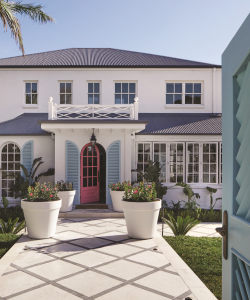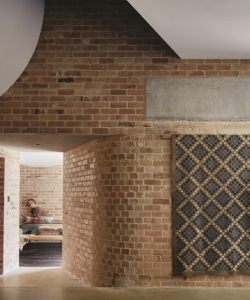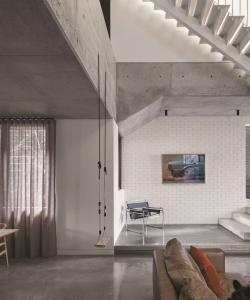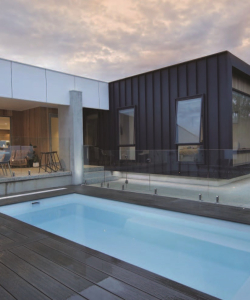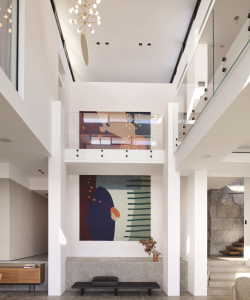It’s one thing to design a beautiful house that aligns with current trends but creating something that will stand the test of time is an extraordinary feat.
Perth architect Neil Cownie says he strives for timelessness in all his projects, including this striking Floreat residence designed for a family with young children.
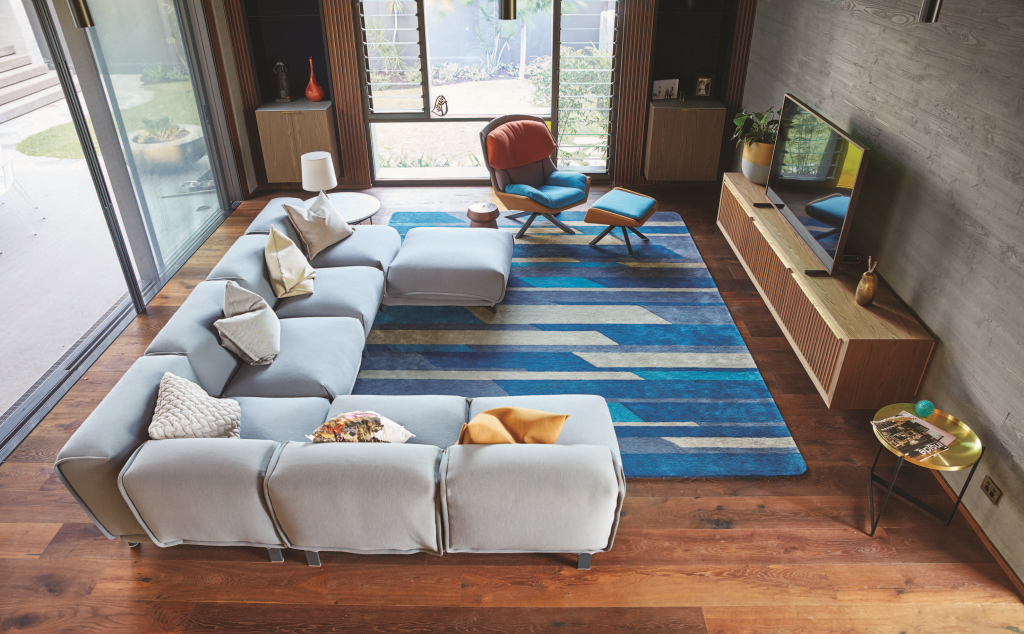
Picture: Robert Firth
“There is no point in investing all that money in a new building that will look dated in a few years time,” Neil says.
“I try to avoid trends and rather look to see what is specific about each client and each site so that the completed building sits comfortably both for the inhabitants of the building and for the wider community when viewing the building.
“I think everyone has a responsibility to the community when building to ensure that their new building will be contributing positively to that community.”
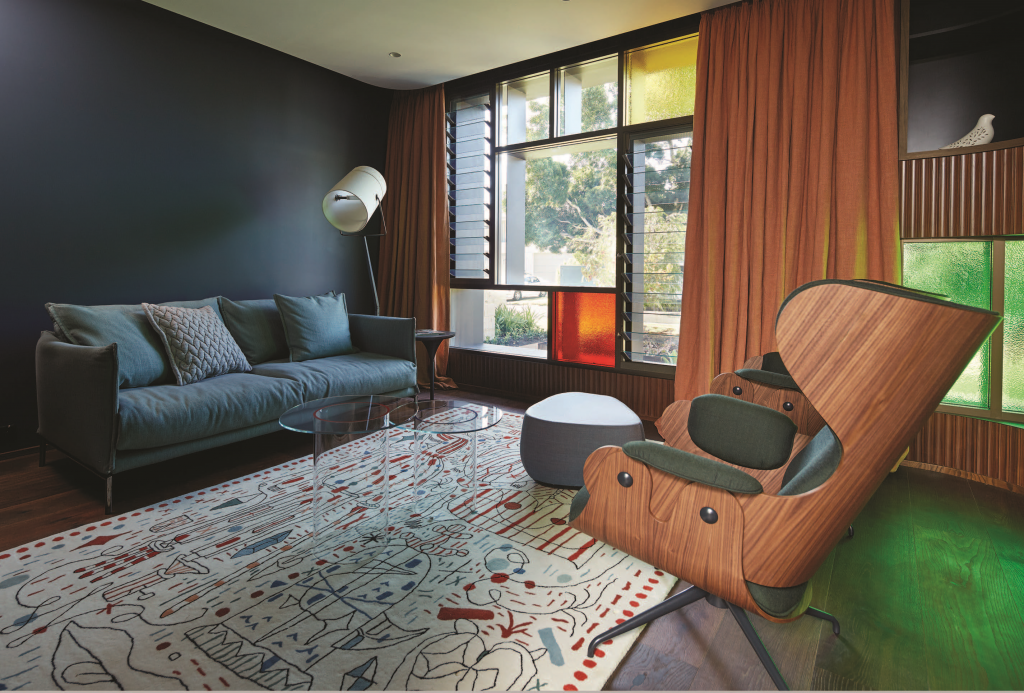
Picture: Robert Firth
Neil says the materials selected for this house were inspired by its location.
“I researched the history of the area as I do with each project prior to commencing any design work,” he says.
“The greater area around Roscommon House has a significant modernist and brutalist architectural history.
“Concrete was used as a finished expressed wall and ceiling finish in many buildings in this locality. The nearby Memorial Hall at Hale School is a significant building in that it was the first building in Australia to celebrate concrete as a finished material through the use of ‘board marked’ off-form concrete.
“Other nearby examples of materiality include both the City Beach and Floreat Beach kiosk buildings, where the ‘fluid’ opportunities of concrete structures were explored by architect Tony Brand. It was these historical uses of material within the local area that led to the design of Roscommon House featuring concrete as it does.”
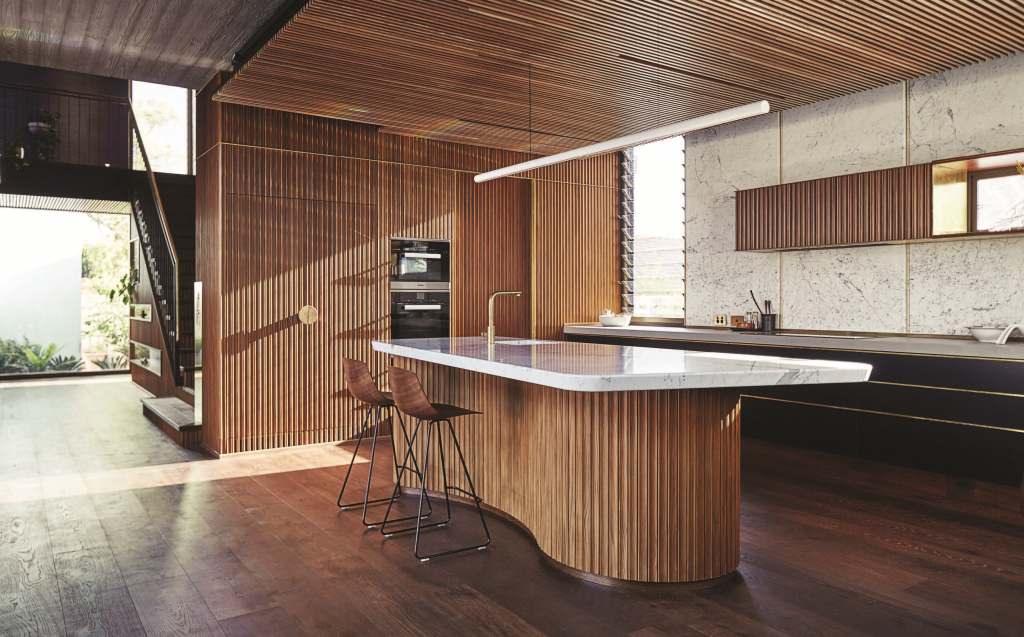
Picture: Robert Firth
Neil says the clients wanted a single-storey house which resulted in a building footprint that covered a lot of the site.
“We therefore took advantage of the roof space to increase the useable area of outdoor space,” he says.
“This design integration of landscape and building is something that I apply now to most of my work. I design my projects from boundary to boundary where the building and landscape are considered as one.
“This has been very successful in Roscommon House where courtyards act as the transitional spaces between internal and external areas. The landscaped garden areas have the same feeling of containment as do the courtyards and internal rooms. More like designing outdoor areas as green rooms.”
Walls and ceilings have been designed as a series of unadulterated planes and blocks of interlocking sculptural shapes, further emphasised through services and lighting being generally discreet or hidden.
Lighting is separated from ceilings by its suspension below, with only feature pendants of a handmade quality being allowed to be emphasised: as is the case in the dining room, kitchen, main bedroom and main stair void.

Picture: Robert Firth

Picture: Jack Lovel
The owners enjoy different areas of the house at different times of the day and seasons. Their front reading room – an intimate space where walls are lined with bookcases – provides a cosy escape from the rest of the action in the house.
“The interior design, curtain and furniture selections in this room all come together to provide a place that you just want to sink into,” Neil says.
The whole family often enjoy both breakfast and dinner in the central courtyard space that is open to the sky. They sit below the Gleditsia tree that provides dappled shade in summer and allows the full sun into the courtyard in winter.
“Outside areas are not leftover spaces, as they were designed to be important spaces in themselves,” Neil says.
The main outdoor space ends with a vista across the pool to the stage-like backdrop to the aqua-coloured tiles. The poolside outdoor area is covered by a sculptural concrete roof form.
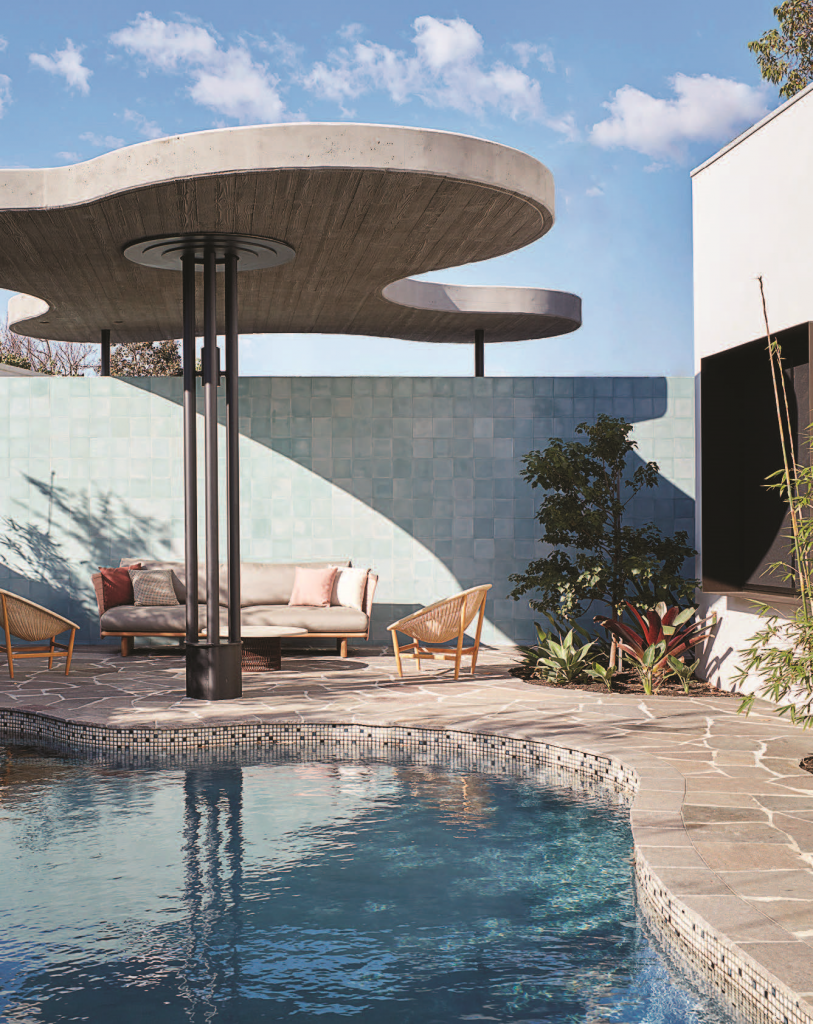
Picture: Jack Lovel
